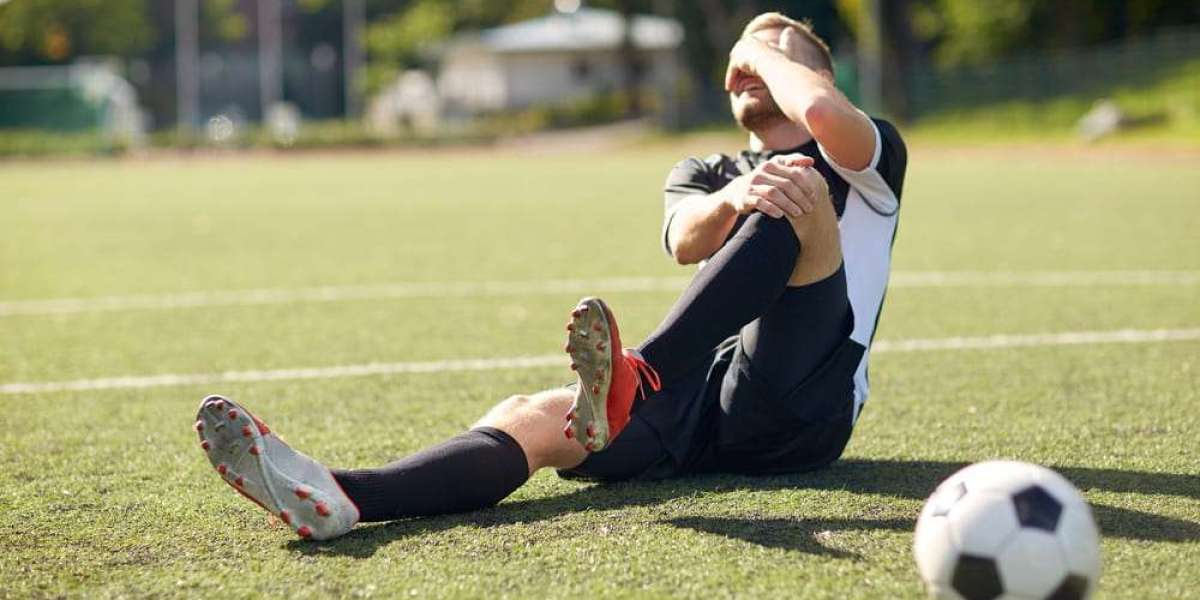Anterior cruciate ligament (ACL) injuries are a common concern among athletes, but research has shown that female athletes are significantly more prone to ACL injuries than their male counterparts. These injuries can have a lasting impact on an athlete’s career and overall well-being, making it crucial to understand the reasons behind this higher risk. In this article, we will explore the factors that contribute to this disparity and offer insights into how female athletes can prevent and recover from ACL injuries.
The ACL and Its Function in the Knee Joint
The ACL is one of the four major ligaments in the knee joint and plays a crucial role in stabilizing the knee during activities like running, jumping, and pivoting. It connects the thigh bone (femur) to the shin bone (tibia), preventing the tibia from sliding forward. An ACL injury typically occurs during sudden changes in direction or awkward landings from jumps, making athletes particularly vulnerable to this type of injury.

Why Female Athletes Are More Vulnerable to ACL Injuries
There are several key reasons why female athletes are at a higher risk of ACL injuries compared to male athletes. These factors include anatomical, hormonal, and biomechanical differences, as well as training and conditioning variations.
1. Anatomical Differences
One of the primary reasons for the increased risk of ACL injuries in women is the difference in anatomy between males and females. Some of the key anatomical factors that contribute to this risk include:
- Wider Hips: Women generally possess a broader pelvic structure compared to men, influencing the angle of the knee joint. This wider stance can lead to a greater angle of knee flexion (known as the "Q-angle"), which places additional stress on the ACL.
- Thinner Ligaments: Studies have shown that female athletes tend to have less ligament mass compared to their male counterparts. Thinner ligaments are less capable of withstanding the stress and strain placed on them during physical activity, making them more prone to injury.
- Smaller Joint Size: Women generally have smaller knee joints, which may make the ACL more vulnerable to injury during high-impact sports. Smaller joints provide less stability and a higher chance of the ligament being overstretched or torn.
2. Hormonal Factors
Hormones play a significant role in the biomechanics of the body, and in particular, the risk of ACL injuries. Research suggests that hormonal fluctuations, especially those related to the menstrual cycle, can influence the risk of ACL injuries in female athletes. Estrogen, a hormone predominant in females, can affect ligament laxity, meaning that during certain phases of the menstrual cycle, the ligaments may become looser and more prone to injury.
- Estrogen and Ligament Laxity: High levels of estrogen can lead to increased ligament laxity (looseness), which reduces the stability of the knee joint and increases the risk of an ACL tear. This may explain why women are more likely to sustain ACL injuries during certain phases of their menstrual cycle.
3. Biomechanical Differences
Female athletes often exhibit different movement patterns compared to their male counterparts, which can contribute to a higher risk of ACL injuries. Some of the biomechanical factors that increase injury risk include:
- Landing Mechanics: Studies have observed that the landing mechanics of female athletes frequently involve a tendency for their knees to collapse inward (knee valgus) and extend more fully (greater knee extension). These movement patterns place additional strain on the ACL, making it more susceptible to injury.
- Quadriceps Dominance: Female athletes tend to rely more on their quadriceps (front thigh muscles) rather than their hamstrings (back thigh muscles) for knee stabilization. When the quadriceps are overactive and the hamstrings are weak, the knee becomes more vulnerable to injury, particularly during activities that require sudden deceleration or changes in direction.
4. Training and Conditioning Differences
Another factor contributing to the higher risk of ACL injuries in female athletes is differences in training and conditioning. Female athletes may not always undergo the same level of strength training or proprioceptive (balance and coordination) training as their male counterparts. Proper conditioning helps to strengthen the muscles around the knee, which can provide better support and reduce the likelihood of ACL injuries.
- Lack of Strength Training: Inadequate strength training can lead to muscle imbalances, where the muscles surrounding the knee are not strong enough to properly stabilize the joint during intense physical activity.for expert advice on injury prevention or rehabilitation, consulting the best orthopedic doctor in Ahmedabad can help you build a stronger knee foundation and reduce your risk of injury.
- Insufficient Proprioception Training: Proprioception is the body’s ability to sense its position in space, which is essential for maintaining balance and coordination. Female athletes who do not undergo proper proprioceptive training may struggle to land properly or control their knee movements during high-impact activities, increasing the risk of injury.
5. Sports-Specific Factors
Certain sports, such as soccer, basketball, and volleyball, place a significant amount of strain on the knees, especially during activities that involve rapid direction changes, jumping, and pivoting. These sports are particularly high-risk for ACL injuries, and since many female athletes participate in them, this further increases their likelihood of sustaining an ACL injury.
Prevention: How Female Athletes Can Reduce the Risk of ACL Injuries
While it may not be possible to completely eliminate the risk of an ACL injury, there are steps that female athletes can take to reduce their chances of injury and improve their knee health.
1. Strength Training
Strengthening the muscles around the knee is one of the most effective ways to protect the ACL. Focusing on strengthening both the quadriceps and hamstrings can help balance the forces acting on the knee and reduce the likelihood of injury.
2. Plyometric and Agility Training
Incorporating plyometric exercises (such as box jumps and lateral jumps) and agility drills (like ladder drills) into training routines can improve landing mechanics and overall knee control. These exercises help athletes learn how to decelerate and land with proper alignment, reducing the risk of ACL injury.
3. Proprioception and Balance Training
Training the body's ability to sense its position in space is essential for knee injury prevention. Balance exercises, such as single-leg stands and balance board exercises, can improve proprioception and reduce the likelihood of awkward landings that may stress the ACL.

4. Stretching and Flexibility
Regular stretching can improve the flexibility of the muscles and tendons surrounding the knee, providing greater range of motion and reducing strain on the ACL. Yoga and dynamic stretching before activity are excellent ways to enhance flexibility and joint mobility.
The best knee replacement surgeon in Ahmedabad can provide valuable tips on improving proprioception and controlling knee movements, which are essential to avoid injuries like ACL tears.
Conclusion
Female athletes face higher ACL injury risks due to anatomy, hormones, biomechanics, and training factors. By understanding these risks and incorporating targeted strength, agility, and proprioception training into their routines, female athletes can reduce their chances of ACL injuries. If you or someone you know is struggling with a knee injury or wants expert guidance on ACL injury prevention, consult the best knee replacement surgeon in Ahmedabad or the best orthopedic doctor in Ahmedabad for a thorough evaluation and tailored treatment plan.
Seek personalised knee health advice from Dr.Meet Mehta, a renowned orthopedic specialist dedicated to helping athletes recover and prevent injuries.



